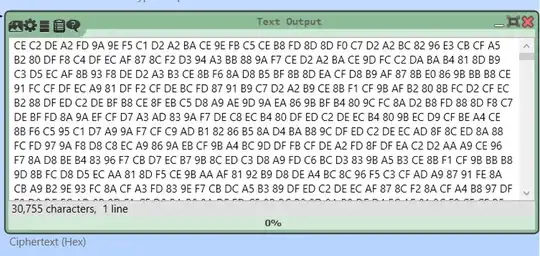My question is - when performing frequency analysis on such ciphers, do I input the hex ciphertext or do I need to transform it into text? How can I comment on that (based on letter frequency or bit occurrence)?
First of all, what you are looking at is a hexadecimal representation of the ciphertext. The ciphertext itself does not consist of hexadecimals, it is binary. Converting it to text makes very little sense; if any analysis has to be done it has to be performed over the binary data without any conversion to text.
We know that DES and AES are permutations over block sizes of 8 or 16 bytes. What you are showing is a DES or AES using mode of operation. Analysis should only be performed on the combination of the two. And you can actually find e.g. duplicate blocks when DES or AES is used in ECB mode. In any correctly used secure cipher mode they should of course be secure, and indistinguishable from random (IND-CCA/IND-CPA).
It doesn't make much sense to use the general frequency analysis over the cipher as the output does not even consist of characters. Generally analysis should not be performed willy-nilly; it is performed while keeping the characteristics of the cipher under investigation in mind. And this kind of leads to the answer...
